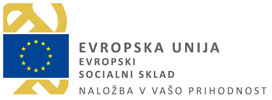Magister inženir tribologije površin in kontaktov/magistrica inženirka tribologije površin in kontaktov
Selected qualifications
| Name of qualification | Name of qualification: Magister inženir tribologije površin in kontaktov/magistrica inženirka tribologije površin in kontaktovAdd to comparison |
|---|---|
| Translated title (no legal status) | Translated title: Master of Science in tribology of surfaces and interfaces |
| Type of qualification | Type of qualification: Master’s degree |
| Category of qualification | Category of qualification: Educational Qualification |
| Type of education | Type of education: Master's education |
| Duration |
Duration of education:
2 years
|
| Credits | Credits: 120 credits |
| Admission requirements |
Entry conditions:
|
| ISCED field |
Field:
Engineering, manufacturing and construction
|
| ISCED subfield | subfield: mechanics and metal trades |
| Qualification level |
SQF Level:
SQF 8 |
The qualification holder will be able to:
(general competences)
- demonstrate understanding of lifelong learning needs;
- participate in multidisciplinary groups to address and resolve technical difficulties and raise awareness of the importance of administrative requirements, accuracy and cooperation;
(subject-specific competences)
- demonstrate understanding of tribological interfaces and systems and the mutual relations of parameters and
- determine key effects from the nano level to the macro level;
- develop theoretical and experimental pathways for the study and resolution of tribological problems;
- incorporate multidisciplinary requirements into a coordinated solution that combines knowledge from various fields related to tribology;
- demonstrate autonomous thinking, creativity and problem-solving ability in tribological groups with individual responsibility;
- work as professional engineers and researchers in multicultural and interdisciplinary groups in the broader field of tribology, surfaces, interfaces and maintenance;
- demonstrate familiarity with industrial requirements and the specifics of the industrial sector and the academic world;
- assess, develop and apply scientific information and knowledge about tribological problems to address problems in industry;
- communicate with experts with an academic and industrial background via written documents, presentations and debates;
- demonstrate familiarity with mechanical systems, materials and lubricants in manufacturing processes, surface and oil analyses; use and interpret experimental techniques and results to address tribological problems (tribometers, microscopes, spectrometers, profilometers, etc.);
Students' knowledge is assessed by means of practical exercises and seminar papers, and also via products, projects, performances, services, etc. and by examinations. Examination performance is scored as follows: 10 (excellent); 9 (very good: above-average knowledge but with some mistakes); 8 (very good: solid results); 7 (good); 6 (adequate: knowledge satisfies minimum criteria); 5–1 (inadequate). In order to pass an examination, a candidate must achieve a grade between adequate (6) and excellent (10).
In order to progress from the first year to the second year, students must have completed at least 60 credits; in order to complete the programme they must complete a further 60 credits and a master's thesis (i.e. a total of 120 credits across the entire programme).
Magister inženir tribologije površin in kontaktov/magistrica inženirka tribologije površin in kontaktov
SQF 8
EQF 7
The Career path tab shows the possible career path within the selected qualification area, which is not the only one and is not mandatory. The actual transition between qualifications, which is determined by law, is defined in the Transition tab.
SQF 10 / EQF 8
Third-cycle doctoral study programmes (SQF level 10)
In order to complete the programme, candidates must successfully complete all course units defined by the programme, consisting of 120 credits, and successfully defend a master's thesis.
Faculty of Mechanical Engineering, University of Ljubljana
URL
Awarding body URL:Upcoming event
International Conference: 10 years of Slovenian Qualifications Framework
International Conference: 10 years of Slovenian Qualifications Framework Brdo Congress Centre, Predoslje 39, 4000...
© Center RS za poklicno izobraževanje, 2018. All rights reserved
Sitemap General legal notice Cookie Policy Production: ENKI






